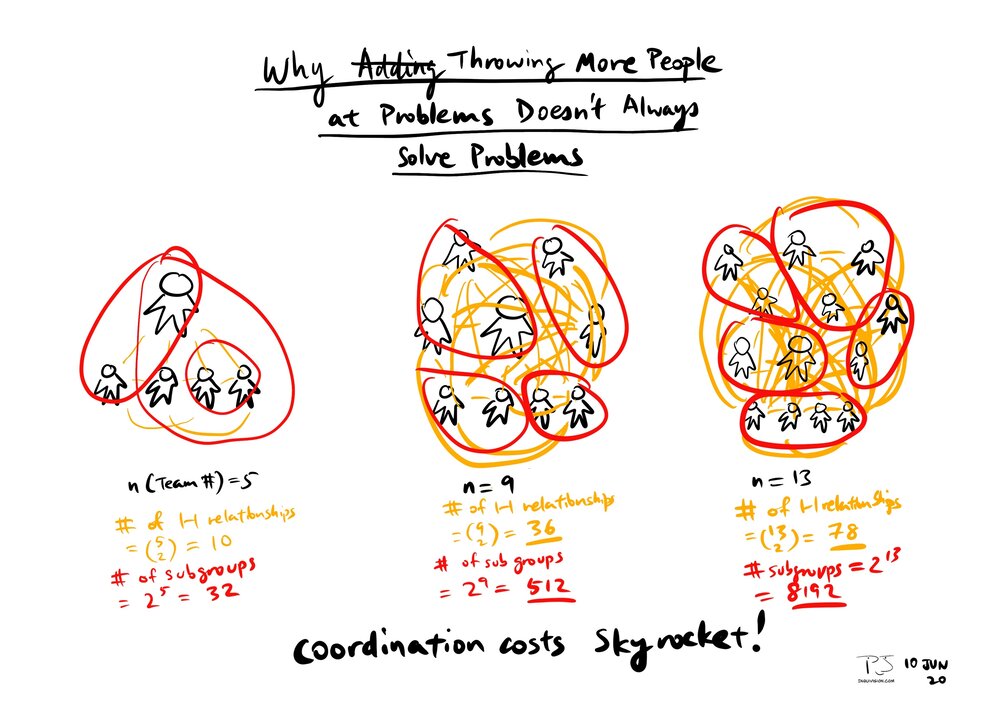How to lead in problem solving
this is an old post which I recently rediscovered. Posting here as I think it’s still a blind spot.
[i am typing without using caps, as i’m suffering from pain in my right hand which is affecting my grip. the non-capped parts of this writeup are written today, while the other parts were written from my reading notes taken earlier.]
i finished reading ‘the great influenza’, a book about the 1918 influenza, and was struck by the comparison between two very different scientists, with two different problem solving approaches.
the two scientists were oswald avery and paul lewis. both were researching into the influenza, but their differnet approaches led to very different results. Both had similar flaws: both were dogged/obstinate/stubborn, both were single-minded, both failed repeatedly, both were ultimately conventionally unsuccessful: nothing too fantastic.
However, it was the difference that is educational:
– Lewis approached problems using brute force, doing huge numbers of experiments. When he encountered failure, he ended up being confused, as his problems were too big and broad and multiplied. Avery broke his problems into smaller ones that could be solved and was able to learn from each failure (Avery did Paul Graham’s “do things that don’t scale”, breaking down the problem into smaller chunks before scaling up later).
– Lewis also sought to add other scientists with expertise into his team, but had no clear idea what role they needed to play; he simply threw resources hoping someone would solve the problem for him. In contrast, Avery recruited specific skills to attack specific problems.
This, despite Lewis often being lauded as “one of the smartest people” Shopes (co-worker and Nobel laureate) said.
End result: Lewis ended up achieving little and dying from yellow fever, while Avery effectively built the foundation for Crick and Watson and others to discover genetics.
what’s striking to me is that, very frequently, the language used in leadership reflects the lewis rather than avery approach. “we have 1000 people working on this 24/7”, “our team has 50 engineers dedicated to this”, “we have 2500 data scientists”, etc.
in this day and age, i think it’s a problem having too many people with the incorrect skills to address problems. because when you throw people at the problem, what ends up taking up their time is coordination: they spend a fair bit of time trying to figure out what to do collectively, and that means alot of time is spent talking to each other.

this diagram describes the mounting coordination cost as a team increases in size. the proxy for coordination cost is two-fold:
– the number of 1-1 pairings in each group
– the total number of subsets in each group (this is calculated using the binomial theorem)
as you can see, increasing a team size from 5 to 9 almost quadruples the number of 1-1 pairings. what does that mean? it means that if you’re a team member of 9 people, your team has much more inter-personal alignment that needs to be done than a team of 5. and you have to worry about much more interpersonal dynamics than in a team of 5.
to add to the mix, digital technology has also reduced the need for headcount. i’m reading the book ‘no filter’ which is about instagram’s rise and acquisition by facebook, and it is striking how much value was created by a team of 17 people (yes, 17!) each with clear roles.
and the same thing happened with whatsapp. and other startups that aren’t that big.
what this means is that leverage is shifting from numbers to skill, especially the skill of designing and building digital products. power no longer rests with huge teams but more with the RIGHT teams that have the data, models and technical leverage. you might be better off having a team of three, comprising of a coding-literate designer, product manager and full stack developer who are all super experienced, vs having a huge team of thirty that are less skilled.
at the same time, with increased specializtion, like depicted in the book ‘range’ by david epstein, the greatest value will come from the generalists who can piece together and straddle multiple specializations. so we will generally need both greater specialisation but also greater breadth.
Updated date 4 May 2020